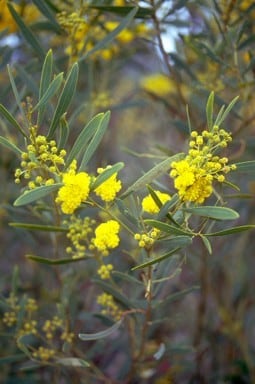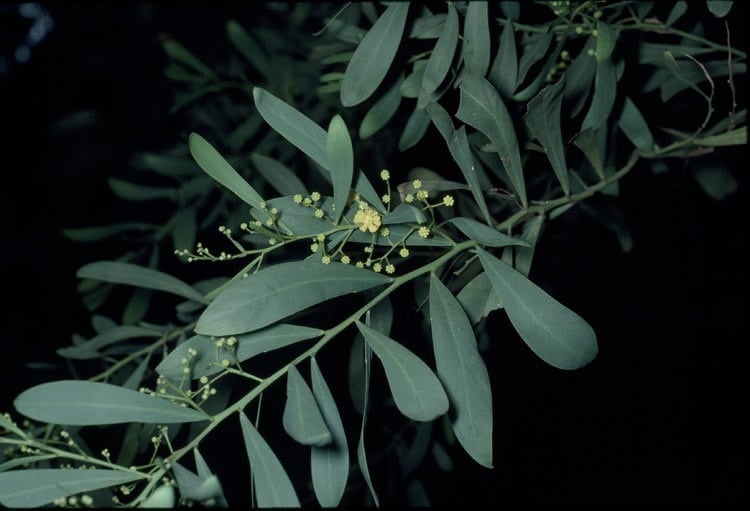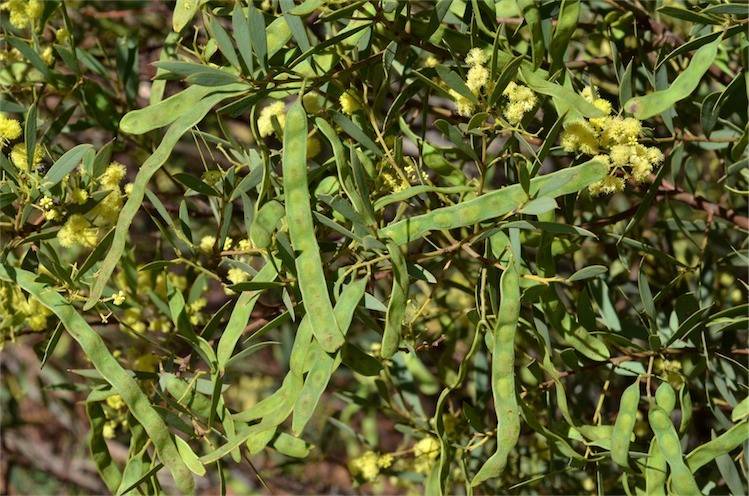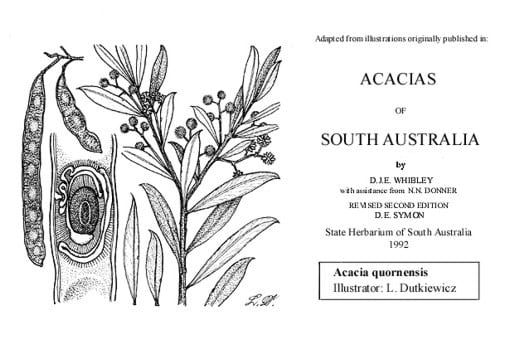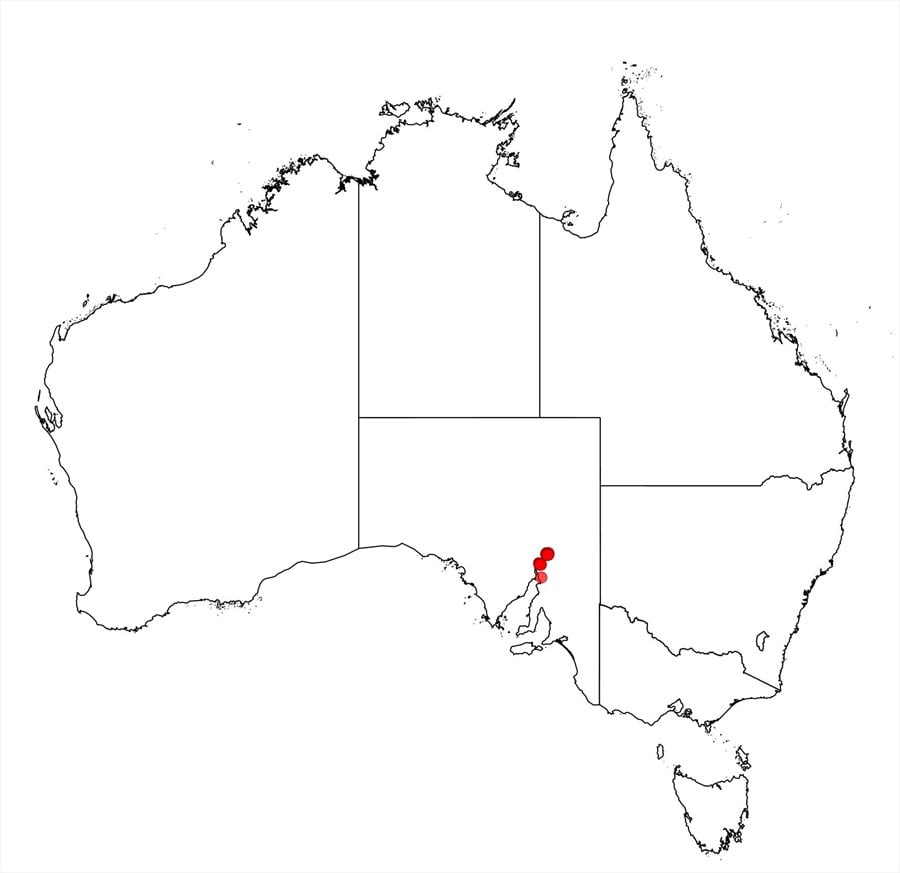Acacia quornensis J.M.Black
WATTLE
Acacias of Australia
Common Name
Quorn Wattle
Family
Fabaceae
Distribution
Restricted to the Quorn–Hawker area, Flinders Ra., S.A.
Description
Spreading, bushy shrub 2–3 m high. Branchlets dark red-brown, glabrous. Phyllodes narrowly elliptic to oblanceolate, 2–5.5 cm long, 4–10 mm wide, acute to acuminate, thinly coriaceous, pale green to glaucous, glabrous; midrib slightly excentric; lateral nerves obscure; gland not prominent, 10–16 mm above pulvinus. Inflorescences racemose, with raceme axes 10–25 mm long, glabrous; peduncles 3–7 mm long, slender, glabrous; heads globular, rather loosely 8–15-flowered, light golden; buds often subacute. Flowers 5-merous; sepals united to near their apices. Pods broadly linear to narrowly oblong, to 13 cm long, 8–9 mm wide, firmly chartaceous to thinly coriaceous, glabrous. Seeds longitudinal, oblong, 5–6 mm long, slightly shiny, black; funicle encircling seed in a double fold, convoluted, brittle, dark reddish; aril clavate.
Habitat
Grows in shallow calcareous loam along rocky creeks or on the lower slopes of ranges, in low woodland associated with Callitris glaucophylla.
Specimens
S.A.: Flinders Ra., c. 5 km NW of Quorn, B.Copley 3247 (AD, MEL, NSW, PERTH); Flinders Ra. region, creek near Yourambulla Peak, D.J.E.Whibley 7032 (AD).
Notes
A member of the ‘A. microbotrya group’ most closely related to A. wattsiana which has obtuse phyllodes, 12–20-flowered heads and obtuse buds, and A. spooneri which has a spindly, open habit, longer raceme axes and 20–40-flowered heads.
FOA Reference
Data derived from Flora of Australia Volumes 11A (2001), 11B (2001) and 12 (1998), products of ABRS, ©Commonwealth of Australia
Author
Minor edits by J.Reid & J.Rogers
B.R.Maslin
This identification key and fact sheets are available as a mobile application:
URL: https://apps.lucidcentral.org/wattle/
© Copyright 2018. All rights reserved.

